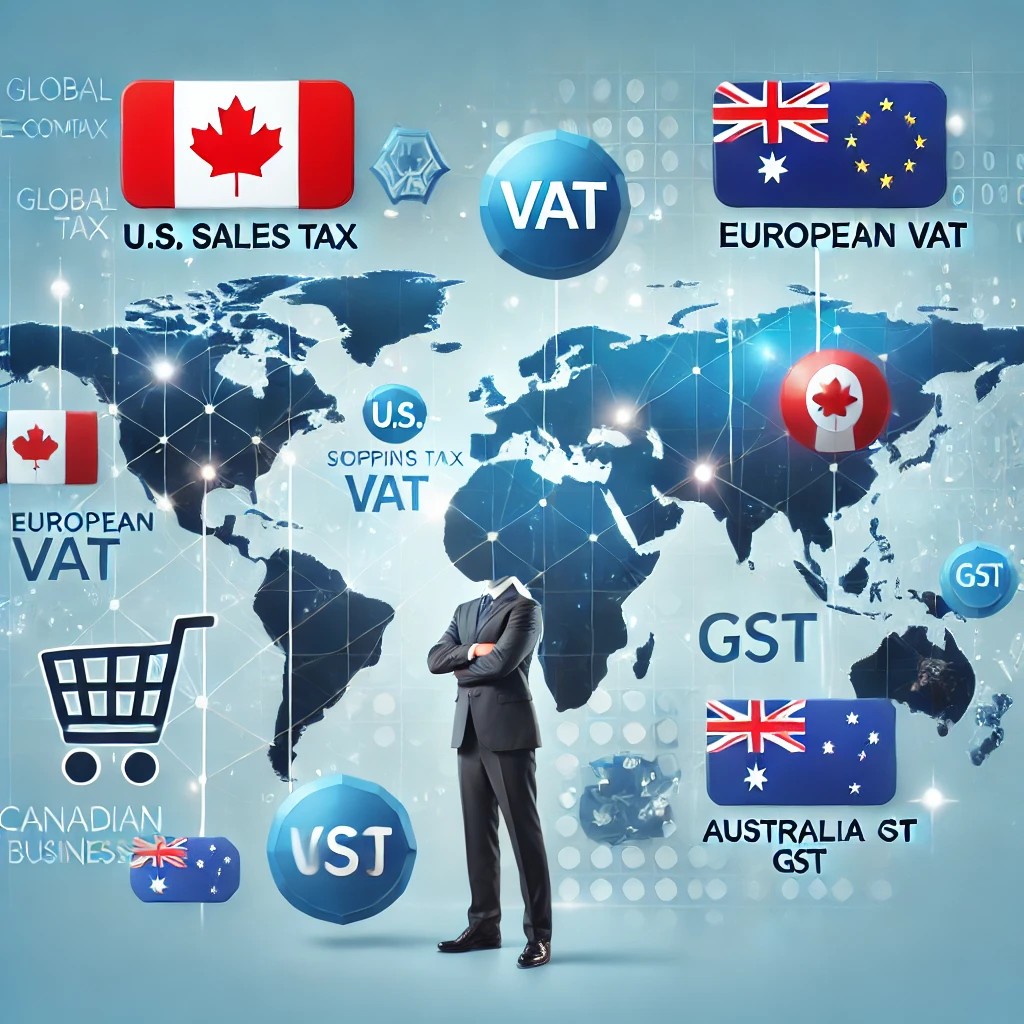
Expanding into international markets can be a game-changer for Canadian businesses, offering significant growth opportunities and access to a broader customer base. However, going global also introduces new challenges—especially when it comes to tax compliance and legal regulations.
If you’re a Canadian business owner planning to sell abroad, this guide will walk you through some critical tax systems and other considerations, focusing on the U.S., Europe, and Australia.
Why Selling Abroad is Worth Exploring
Selling internationally opens doors to vast markets, increasing your sales potential and global recognition. However, successful expansion requires careful planning and an understanding of different markets’ unique tax and regulatory environments.
Here’s what you need to consider staying compliant and competitive:
- U.S. Sales Taxes
- European Value-Added Tax (VAT)
- Australian Goods and Services Tax (GST)
- Other Critical Factors (customs, payments, legal compliance, and market research)
Let’s break these down step by step.
- U.S. Sales Tax: A Decentralized and Complex System
Unlike Canada’s harmonized tax system, the United States has a decentralized sales tax structure where each state establishes its own rules. This makes compliance more complex for businesses selling to U.S. customers.
Key Things to Know:
- Understanding Nexus:
In the U.S., you’re required to collect sales tax in any state where you have a nexus—a significant presence. This nexus can be triggered by either:- Physical Nexus: Operating a warehouse, office, or store in a state.
- Economic Nexus: Conducting a certain level of sales or transactions in a state, often exceeding $100,000 in sales or 200 transactions annually (thresholds vary by state).
- Registration and Compliance:
Once you establish a nexus, you must register for a sales tax permit in that state and file tax returns regularly. Failing to do so can lead to fines and penalties. - Local Variations:
Each state and even some cities have different tax rates and exemptions. Products taxable in one state might be tax-free in another. For example, clothing may be taxed in some states but not in others.
Tip: Use automated tax software to track where you’ve established a nexus and simplify compliance.
- European VAT: Simplified System but High Compliance Standards
In the European Union (EU), the Value-Added Tax (VAT) is a consumption tax applied to most goods and services. VAT rules are more harmonized across EU countries than U.S. sales tax, but businesses must still follow specific compliance guidelines.
What You Need to Know:
- Registration Thresholds:
VAT registration becomes mandatory once your sales exceed the country-specific threshold, typically ranging from €35,000 to €100,000 annually. Some countries, however, require registration from your first sale. - Digital Goods and Services:
Selling digital products (e.g., software, online courses, or e-books)? VAT applies from the first sale in most EU countries, without any threshold. - Use the One-Stop Shop (OSS):
The OSS system makes VAT reporting simpler for businesses selling across multiple EU countries. Instead of registering in every country, you can file a single VAT return that covers all sales in the EU.
Tip: Keep detailed records of your transactions in each country and consider hiring a VAT specialist to avoid mistakes.
- Australian GST: Simple Rules with Mandatory Compliance
Australia applies a 10% Goods and Services Tax (GST) to most goods and services sold to Australian consumers. Canadian businesses selling to Australia must be aware of GST registration requirements and inclusive pricing rules.
Key Considerations for GST Compliance:
- Registration Threshold:
Businesses earning more than AUD 75,000 annually from Australian sales must register for GST. - Inclusive Pricing:
Australian law requires all advertised prices for consumers to include GST. Ensure that your pricing strategy accounts for this to avoid surprises later. - Digital Goods and Services:
Just like in the EU, GST applies to digital products sold to Australian customers. This rule applies even if you don’t have a physical presence in Australia, provided your sales exceed the threshold.
- Additional Considerations When Selling Internationally
Beyond tax compliance, there are other important factors you need to address to ensure a smooth entry into foreign markets.
Customs and Duties
Every country has its own import/export rules, including customs documentation and tariffs. Research the classification codes for your products to determine applicable duties and taxes. Working with a customs broker can help streamline this process.
Payment Processing
Set up payment systems that can handle multiple currencies and comply with local regulations. Offering popular payment methods in each country—such as PayPal, credit cards, or local options—can improve the shopping experience and boost conversions.
Market Research
Before entering a new market, conduct in-depth research on customer preferences, market demand, and competition.
- Customer Behavior: What’s the local buying behavior?
- Competitor Analysis: Who are your main competitors, and what pricing strategies do they use?
Legal Compliance
Stay informed about local laws regarding intellectual property, advertising standards, and consumer rights. Ensure that your contracts, terms of service, and product labeling comply with local requirements.
Tip: Consult a legal professional in each country you plan to sell in to ensure full compliance.
Conclusion: Plan, Prepare, and Expand with Confidence
Expanding your business internationally offers immense potential, but it requires thorough planning and compliance with various tax and legal obligations. By understanding U.S. sales tax rules, European VAT, Australian GST, and other factors like customs and payment processing, you can build a strong foundation for global success.
Take the Next Step:
If you need assistance with tax compliance, registration, or global expansion strategies, consult a tax professional who specializes in international business. Proper planning can help you grow without unnecessary risks or complications.
